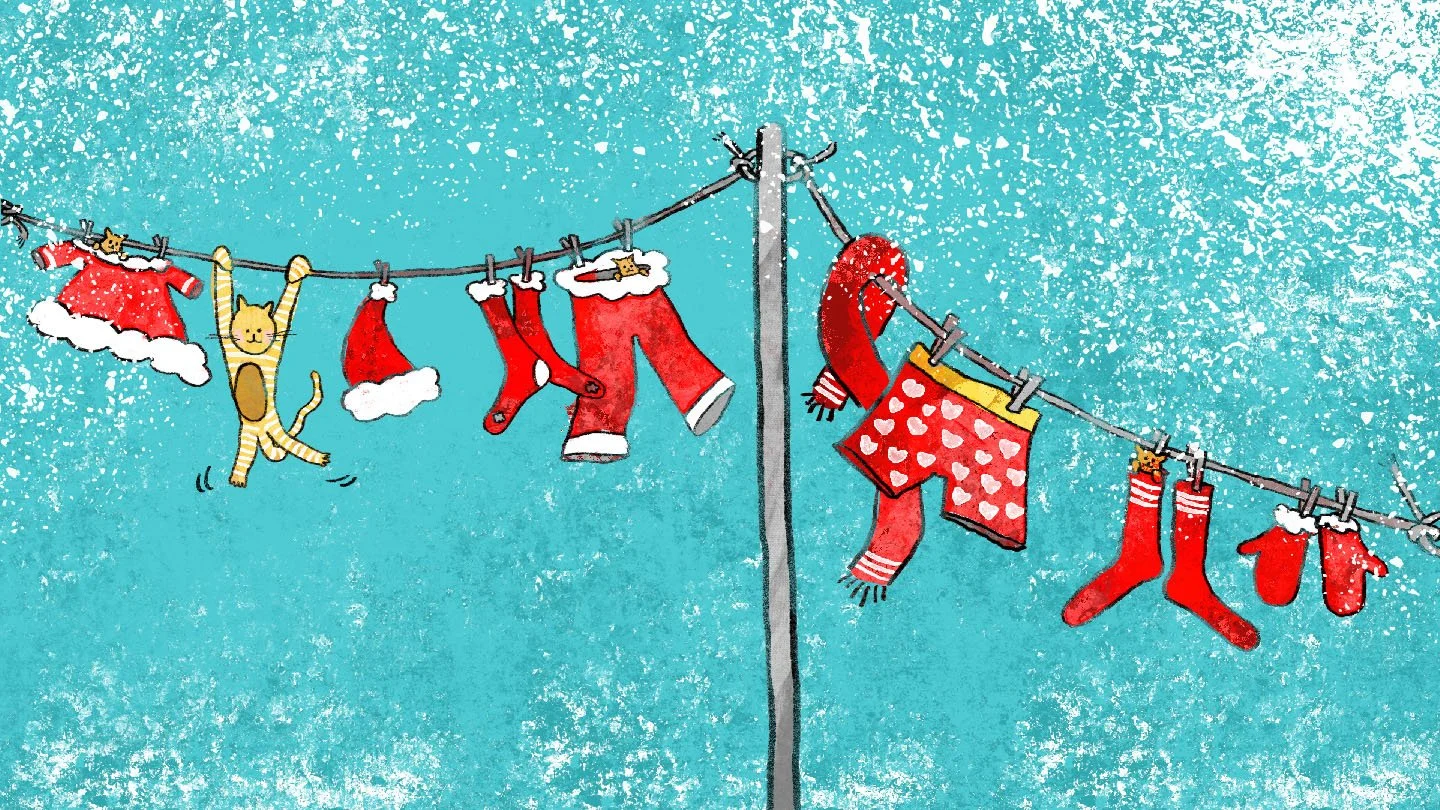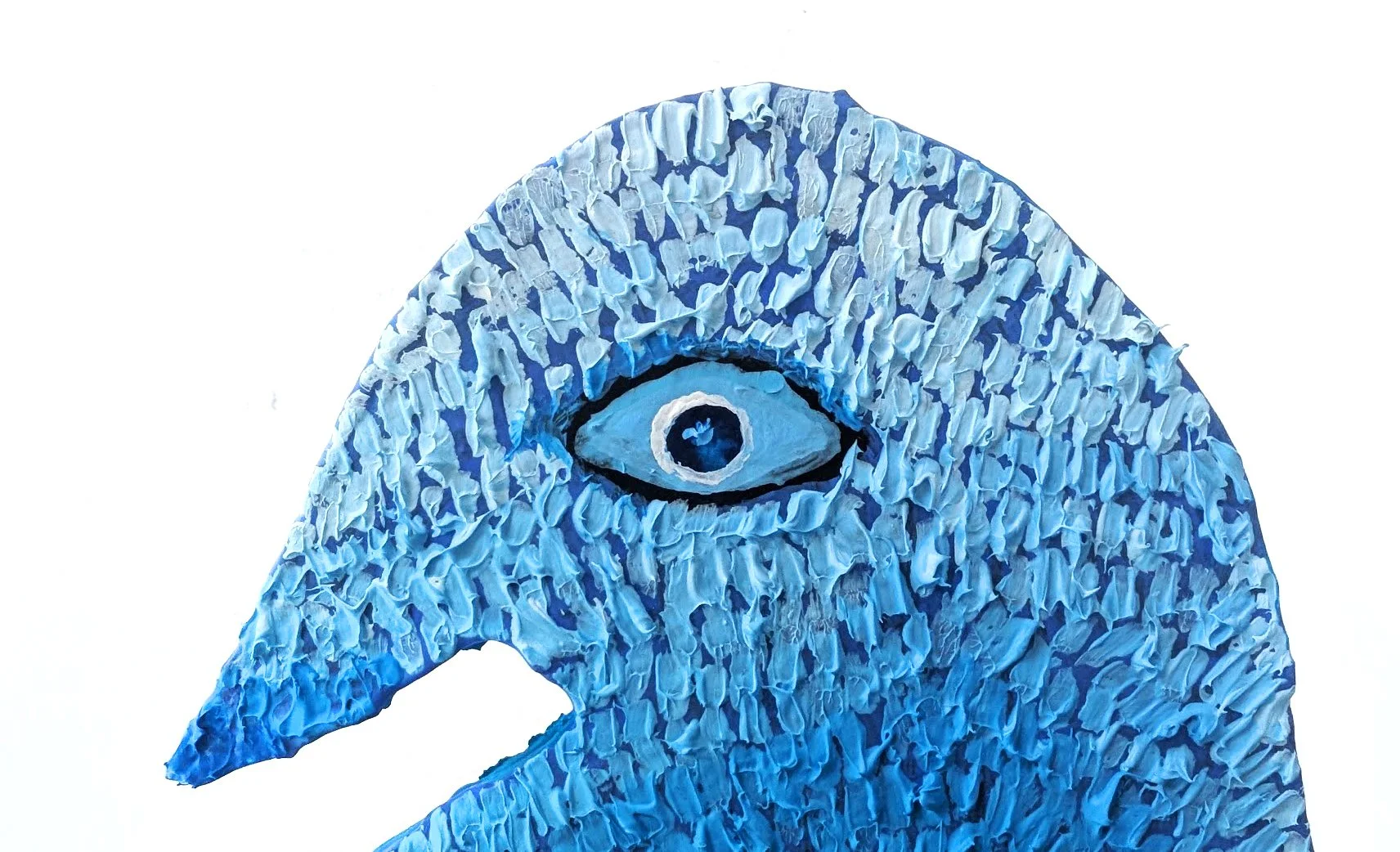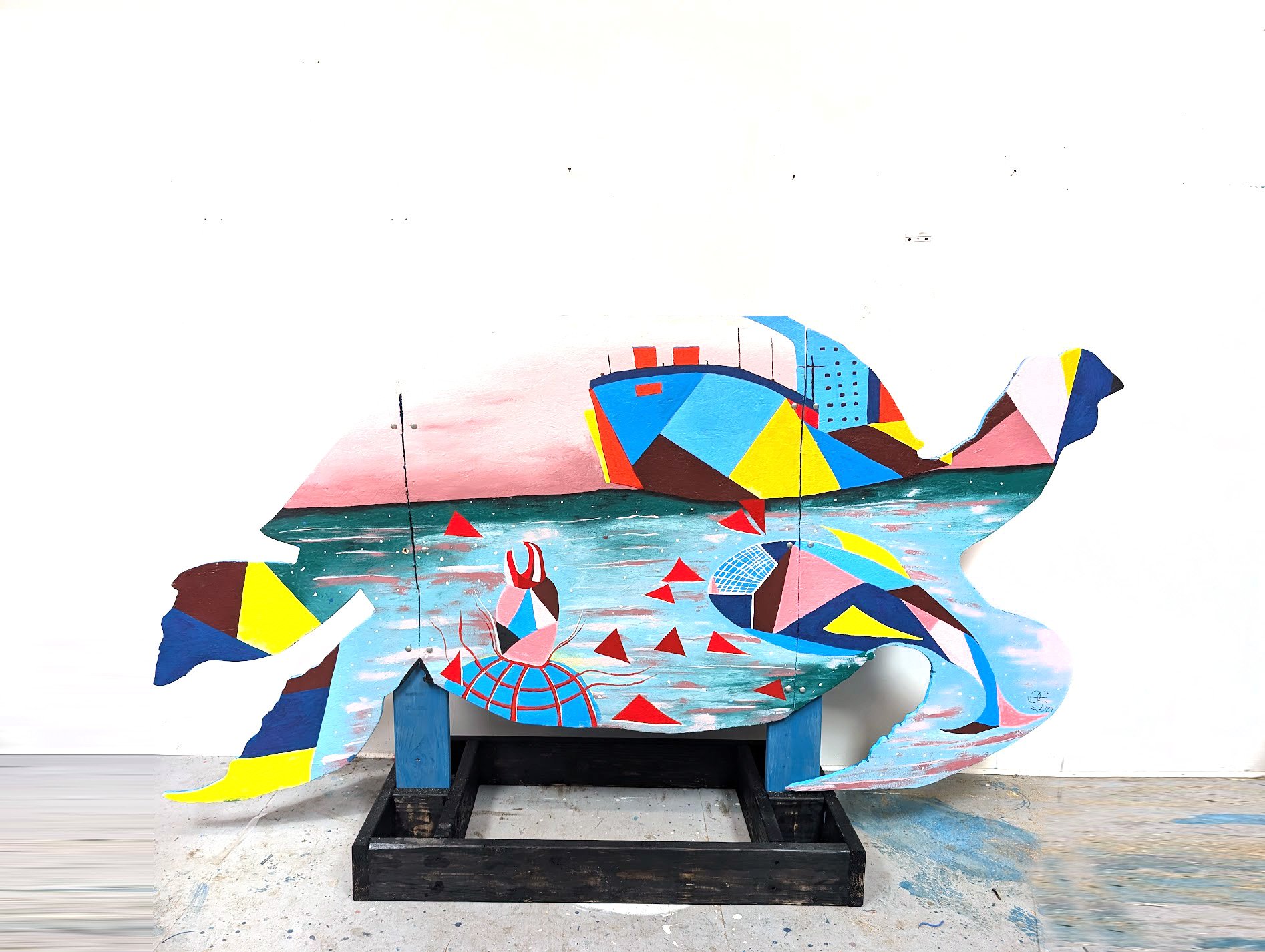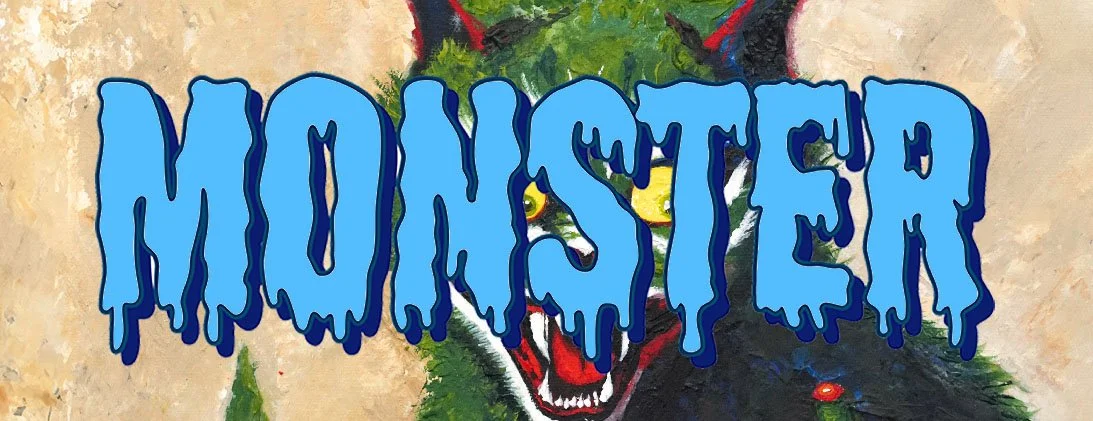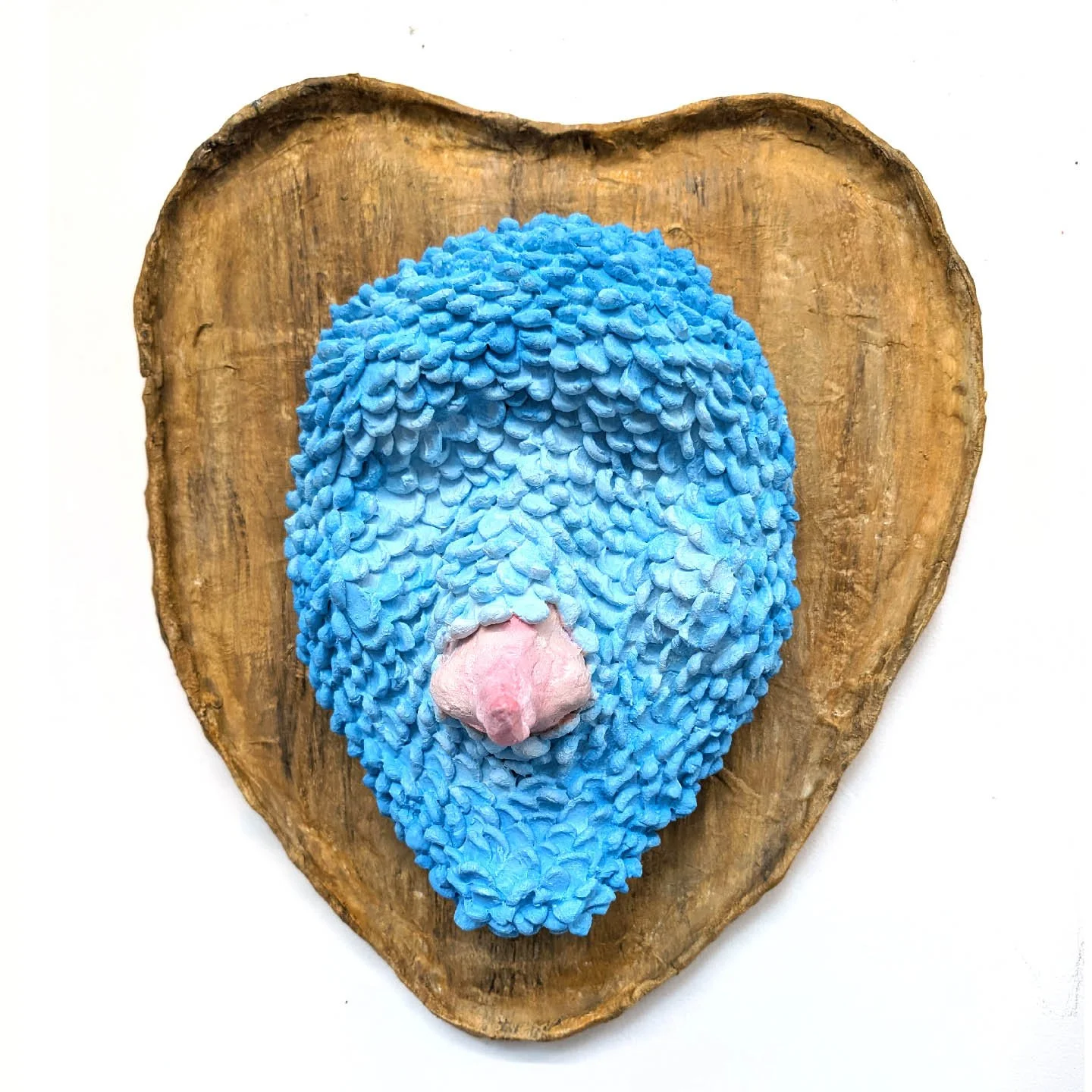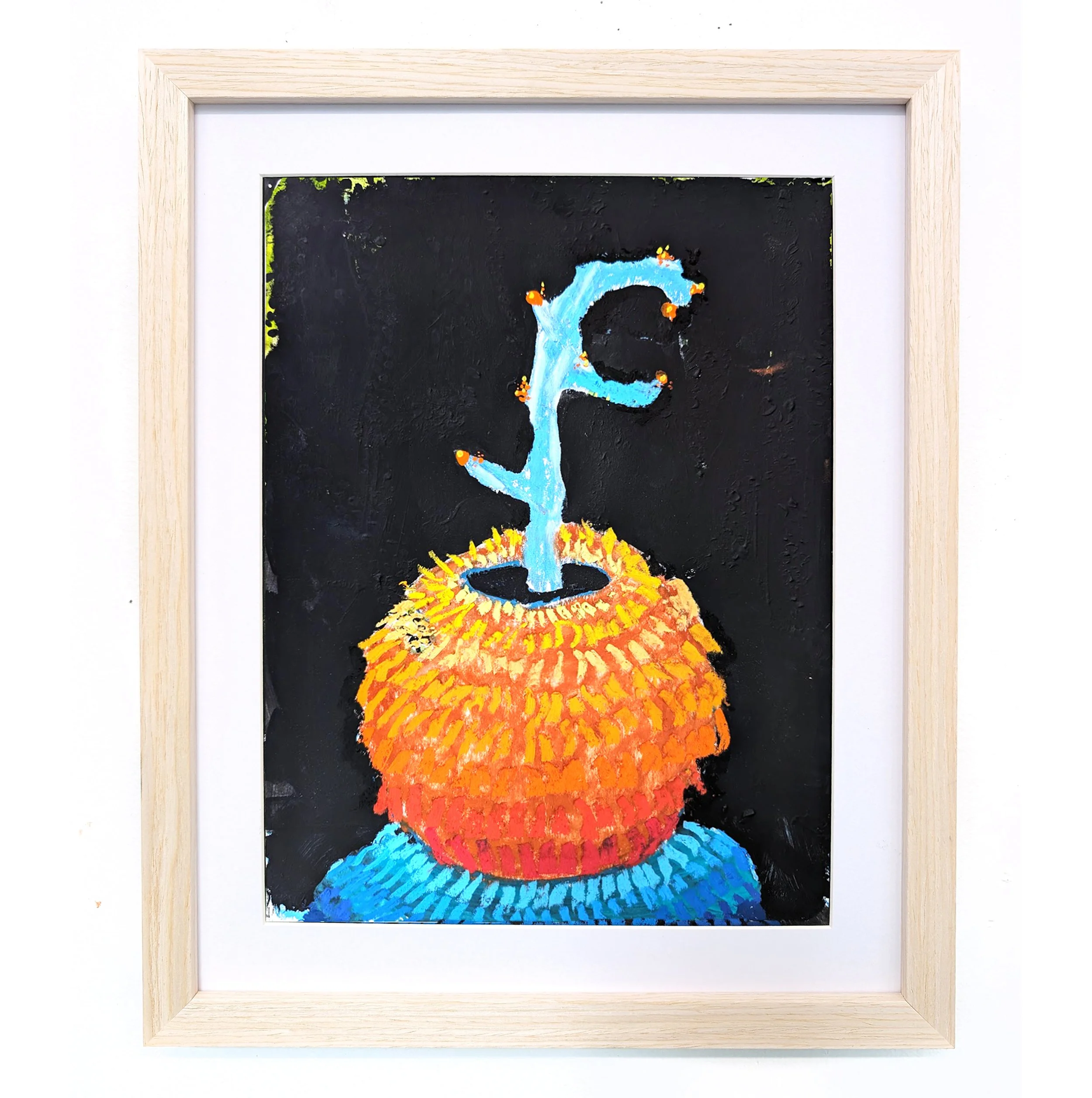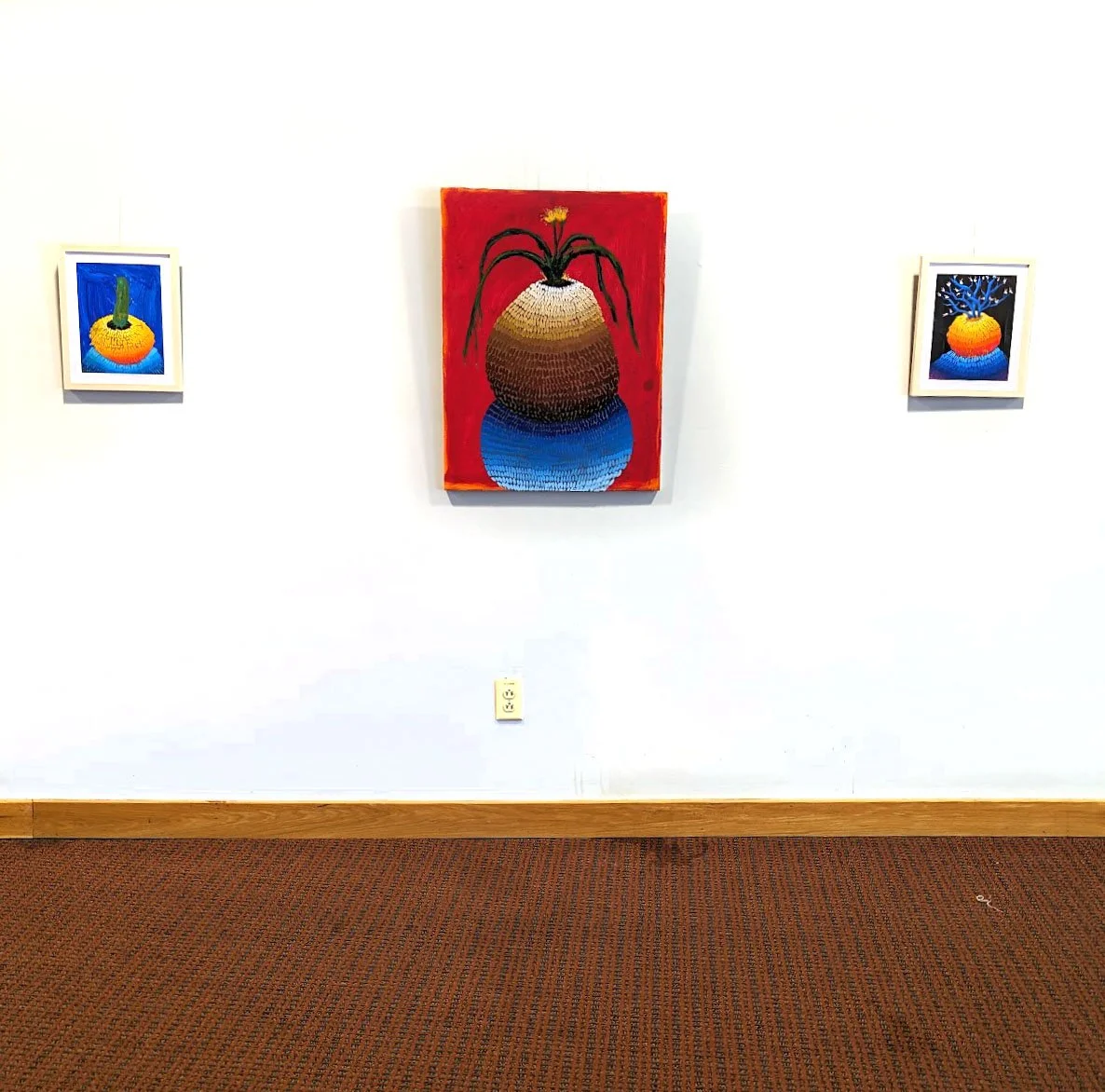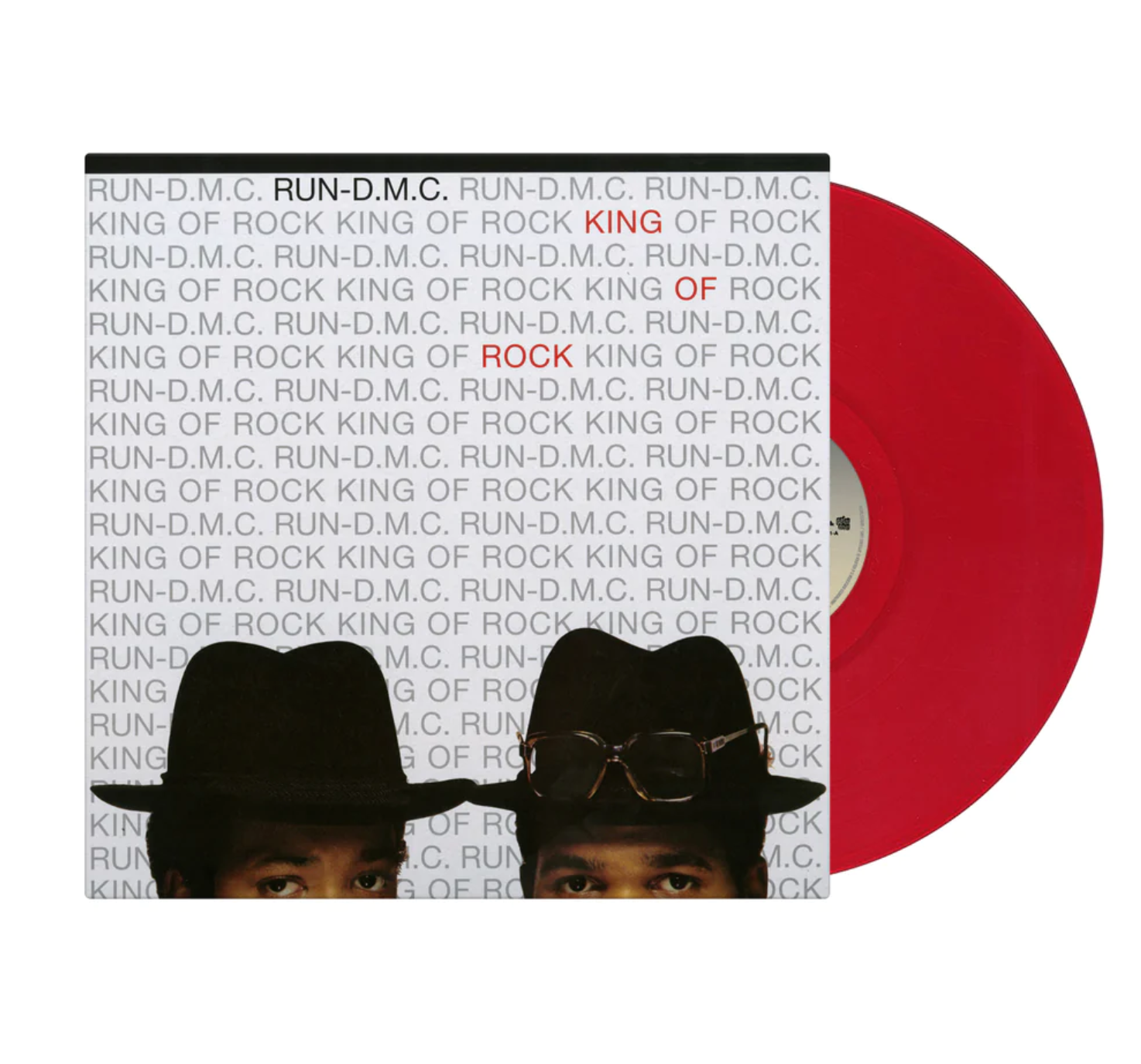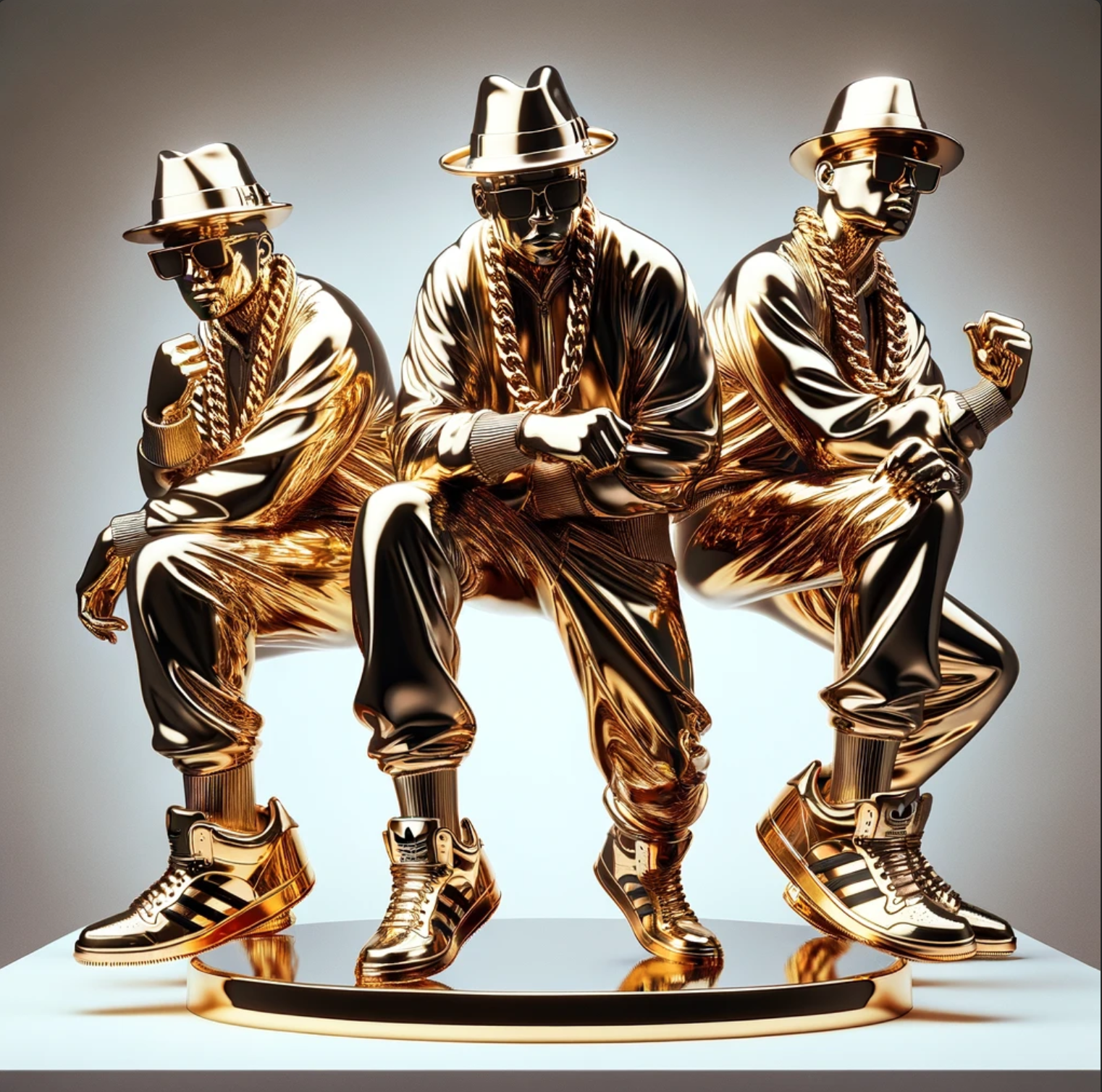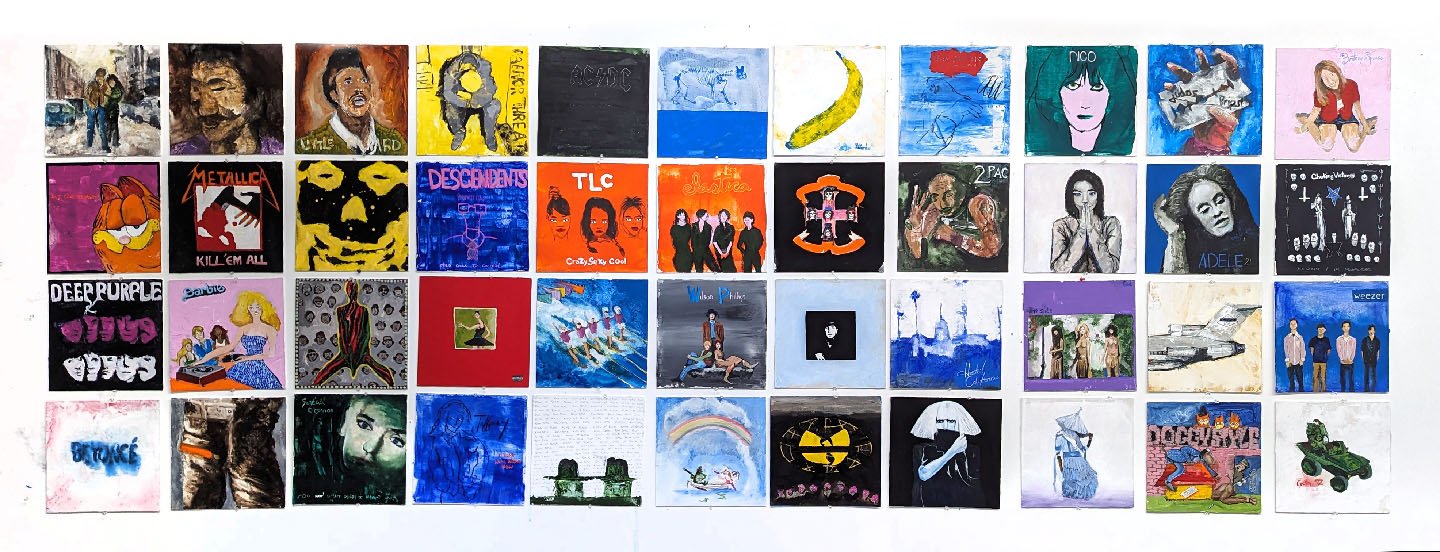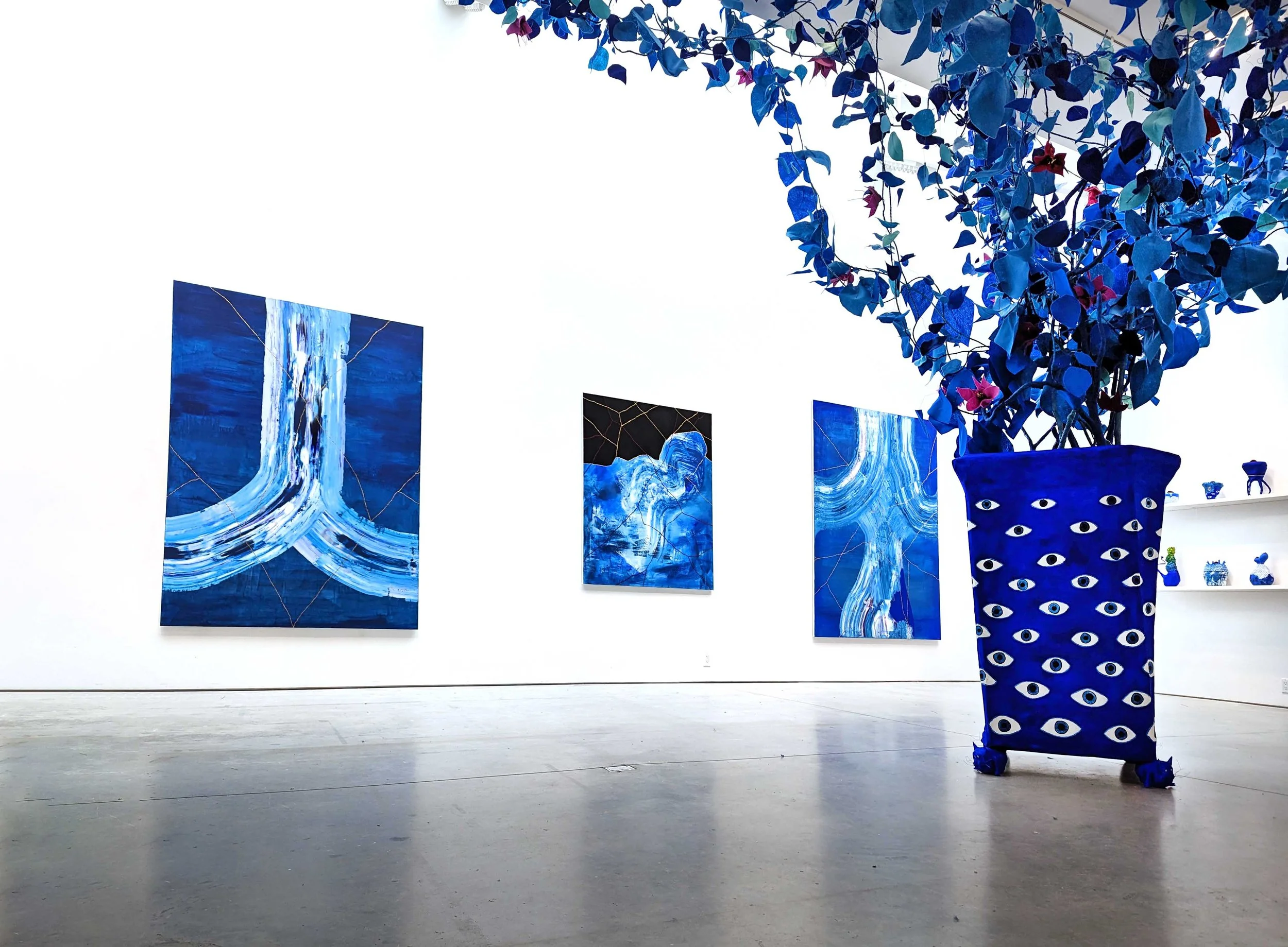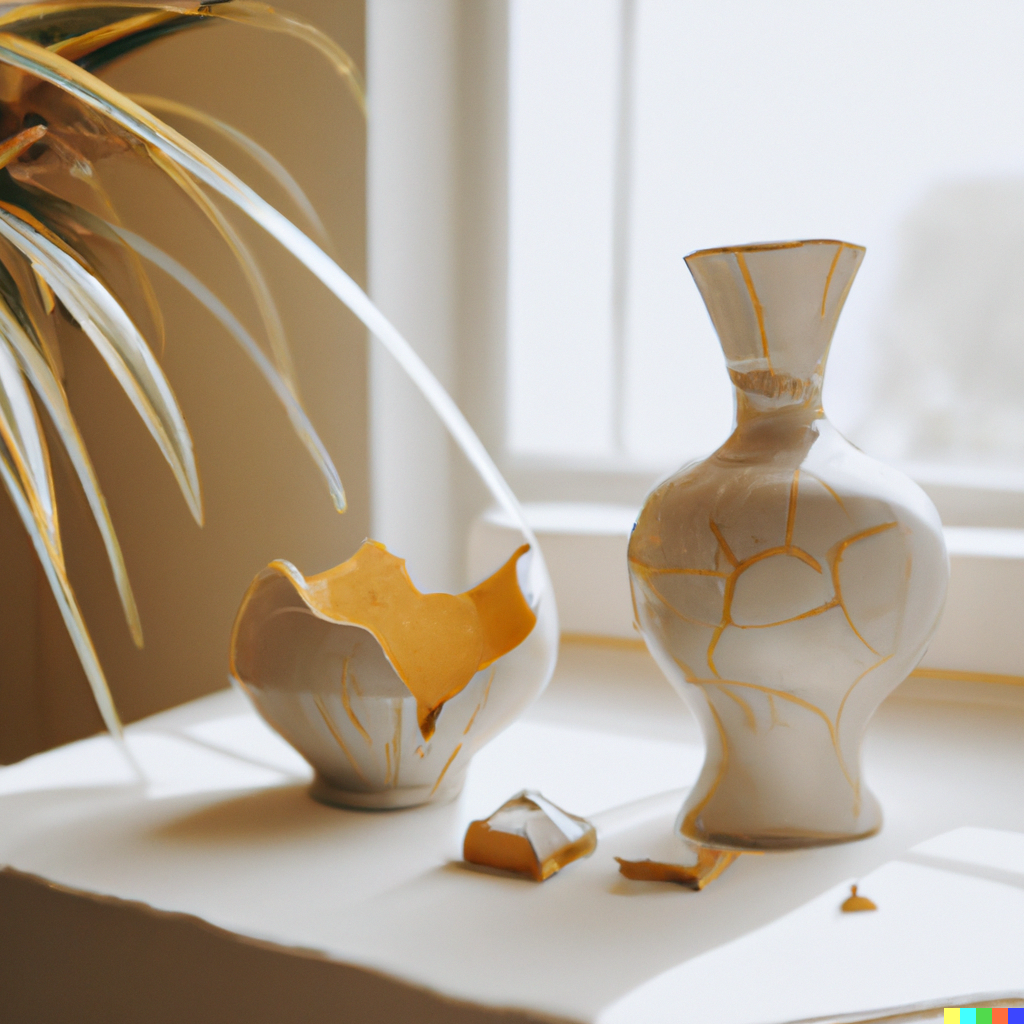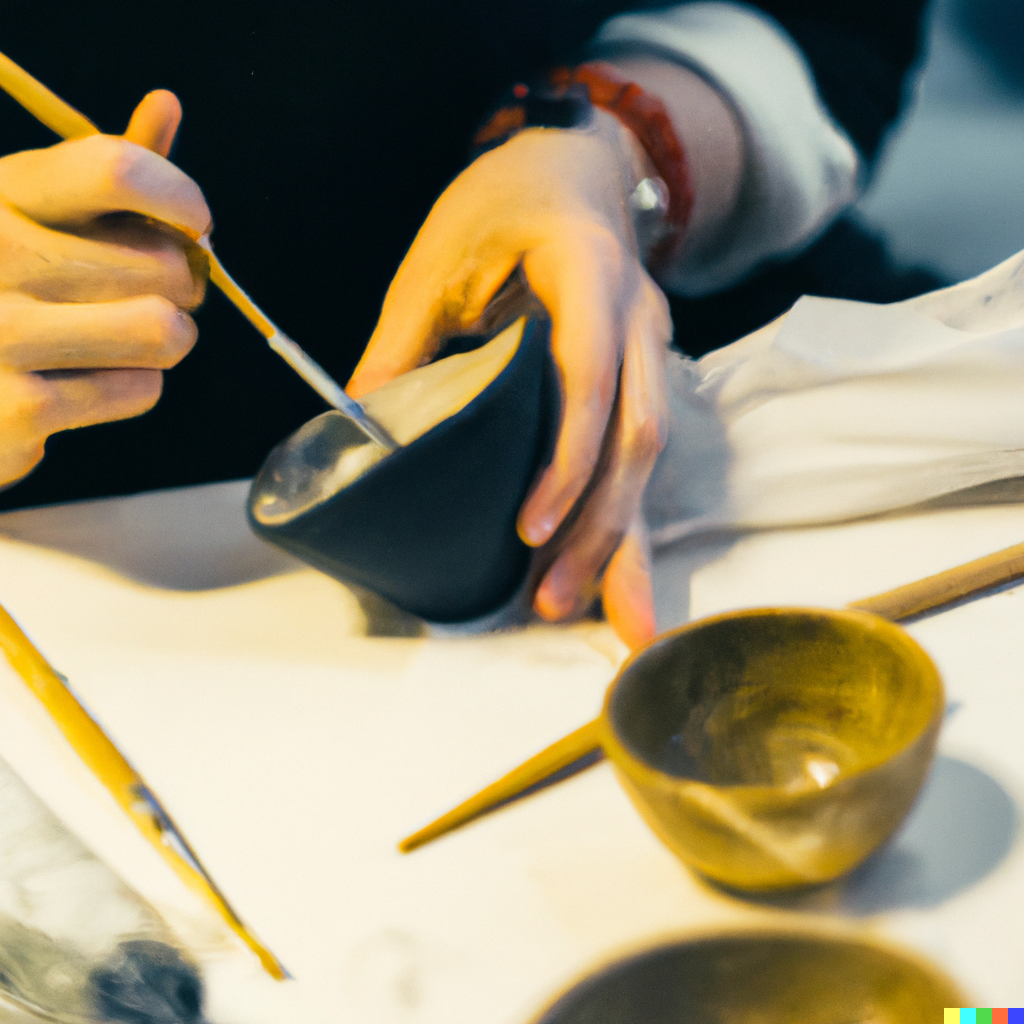ILLUSTRATION x SAMSUNG 2024/2025
In late 2024 Jac Lahav will be working in collaboration with the Mystic Aquarium and Public Art for Racial Justice Education (PARJE) to bring environmental awareness to life through art, with a special focus on marine debris and ocean conservation. As part of this initiative, Lahav is creating two life-sized penguin stand-up art pieces, coloring book pages on ocean wildlife, and will be working alongside Norwich artist Samson Tonton to create a large scale sea turtle painting/sculpture.
Lahav’s penguins will be featured in a mobile educational display designed to engage visitors and promote sustainable practices, particularly reducing single-use plastics that harm our oceans and marine wildlife. The project aims to spark conversation and action, encouraging people to think about how their everyday choices affect the environment.
The penguin stand-ups are both visually engaging and serve as a reminder of the importance of protecting our oceans and the species that depend on them. Through this partnership, we hope to reach a broad audience, from tourists to local residents, and inspire real change in how we treat our planet.
Digital Illustration: NAVA Contemporary x Samsung FRAME
New Illustrations
Samsung FRAME TV 2024 / 2025
The Samsung Frame TV was designed to transform living spaces and showcase artwork when not being used as a traditional TV. The Frame store features a gallery of over 2,500 iconic works of art from world-renowned institutions, and artists like Jac Lahav.
In addition to being a fine artists, Lahav has been illustrating children books since the birth of his first child in 2015. So it was no surprise that in 2024 Lahav was asked to create a selection of illustrations featuring winter and holiday themes in his signature childrens book style.
LIMITED EDITION PRINTS AVAILABLE : INQUIRE
Mystic Aquarium - Marine Debris / Beach Cleanup Equity Program
In late 2024 Jac Lahav will be working in collaboration with the Mystic Aquarium and Public Art for Racial Justice Education (PARJE) to bring environmental awareness to life through art, with a special focus on marine debris and ocean conservation. As part of this initiative, Lahav is creating two life-sized penguin stand-up art pieces, coloring book pages on ocean wildlife, and will be working alongside Norwich artist Samson Tonton to create a large scale sea turtle painting/sculpture.
Lahav’s penguins will be featured in a mobile educational display designed to engage visitors and promote sustainable practices, particularly reducing single-use plastics that harm our oceans and marine wildlife. The project aims to spark conversation and action, encouraging people to think about how their everyday choices affect the environment.
The penguin stand-ups are both visually engaging and serve as a reminder of the importance of protecting our oceans and the species that depend on them. Through this partnership, we hope to reach a broad audience, from tourists to local residents, and inspire real change in how we treat our planet.
Marine Debri SEPT 2024 - 2026
In late 2024 Jac Lahav will be working in collaboration with the Mystic Aquarium and Public Art for Racial Justice Education (PARJE) to bring environmental awareness to life through art, with a special focus on marine debris and ocean conservation. As part of this initiative, Lahav is creating two life-sized penguin stand-up art pieces, coloring book pages on ocean wildlife, and will be working alongside Norwich artist Samson Tonton to create a large scale sea turtle painting/sculpture.
Lahav’s penguins will be featured in a mobile educational display designed to engage visitors and promote sustainable practices, particularly reducing single-use plastics that harm our oceans and marine wildlife. The project aims to spark conversation and action, encouraging people to think about how their everyday choices affect the environment.
The penguin stand-ups are both visually engaging and serve as a reminder of the importance of protecting our oceans and the species that depend on them. Through this partnership, we hope to reach a broad audience, from tourists to local residents, and inspire real change in how we treat our planet.
Stay tuned for updates on this project and ways you can get involved in supporting ocean conservation through art!
UPCOMING DATES
September 21, 10:00-1:00 – Bluff Point State Park, Groton, International Coastal Clean Up
September 28, 9:30-11:30 - Pond Lily Nature Preserve, 42 E Ramsdell St, New Haven, International Coastal Cleanup
October 12, 1:00-3:00 – Long Wharf, New Haven, International Coastal Clean Up
October 27, 9:00 – Mystic Aquarium, Penguin Run
Lyme Public Library: Foster Paintings
Jac Lahav brings his powerful "Foster Paintings" series to the Lyme Public Library from September 1 to November 30, 2024. As a licensed foster parent, Lahav’s deeply personal works explore the emotional complexities of foster care, with each painting symbolizing the phone calls he and his partner received for potential foster placements. Typically shown in larger museum spaces, Lahav is excited to present his work in a more intimate community setting, allowing for a broader and more diverse audience to engage with the important themes of nurturing and the often-overlooked realities of foster care. Visitors are invited to reflect on these vivid abstractions and the stories they represent.
FOSTER PAINTINGS
SEPT 1 - NOV 30 | 2024
Jac Lahav’s “Foster Paintings” on Display at Lyme Public Library, Sept 1 - Nov 30, 2024
Lyme, CT—Renowned artist Jac Lahav, known for his museum exhibitions across the United States, brings his deeply personal and evocative series, “Foster Paintings,” to the Lyme Public Library this fall. The exhibition runs from September 1 to November 30, 2024, offering a unique opportunity for the local community to engage with Lahav's work.
The "Foster Paintings" series explores the complex emotional landscape of foster care, an issue close to Lahav’s heart as a licensed foster parent. Each piece in this series is a vivid abstraction that symbolizes the many phone calls Lahav and his partner received about potential foster placements. Through these works, Lahav delves into themes of nurturing, growth, and the unpredictable journey of fostering, offering viewers a window into an often-overlooked aspect of society.
Lahav, who typically exhibits in prominent museums such as the Lyman Allyn Art Museum and the Slater Memorial Art Museum, is passionate about bringing his work into the community. “I love displaying my work in more intimate settings like the Lyme Public Library,” says Lahav. “It allows me to connect with a more diverse audience and bring awareness to the realities of foster care in a setting that feels accessible to everyone.”
The Lyme Public Library is thrilled to host this exhibition, which continues their commitment to presenting thought-provoking art that resonates with local and broader social issues. Visitors are encouraged to take this opportunity to experience Lahav's work in a setting that fosters reflection, conversation, and community engagement.
SPRING/BREAK ART SHOW 2024 : MONSTER
"Monster" explores societal fears and power imbalances through the lens of horror. The exhibition divides its space into a dark interior, where art-world monsters like fraudsters and looters reside, and an illuminated exterior, where artists confront themes of trauma, gender, and survival.
In the dark, Jac Lahav’s animatronics and Taylor Lee Nicholson’s severed heads evoke haunted house horror, critiquing those who exploit from the shadows. In the light, Caitlin McCormack’s crocheted art, Nicholson’s kitsch installations, and Charles Clary’s paper sculptures use horror elements to address issues like gender inequality, loss, and resilience.
The exhibition uses the horror genre’s blend of shock and dark humor to challenge viewers to reflect on who holds power and the consequences of our failures.
GROUP SHOW FEATURING
CAITLIN MCCORMACK, CHARLES CASEY, TAYLOR LEE NICHOLSON, AND JAC LAHAV
ORGANIZED BY MICHELE JASLOW AND JAC LAHAV
Monster uses the tropes and aesthetics of horror movies to explore who exists in the exterior light of day and who dwells in the dark interior. Curators Jac Lahav and Michele Jaslow and artists Charles Clary, Caitlin McCormack, Taylor Lee Nicholson, and Jac Lahav use horror elements to examine themes of trauma, loss, poverty, gender-equality, isolation, and things falling apart.
BUY TICKETS HERE
SPRING/BREAK Art Show
New York City 2024
75 VARICK, NYC // September 4 - 9
FIRST LOOK COLLECTORS & PRESS PREVIEW
Wednesday, September 4th // 2pm - 5pm
VIP PREVIEW OPENING NIGHT
Wednesday, September 4th // 5pm - 8pm
VIP PREVIEW DAY
Thursday, September 5th // 12pm - 7pm
REGULAR SHOW DAYS
September 6 - 9 // 12pm - 7pm
PRESS RELEASE
Who is your monster? Our monsters here are the fraudster, forger, acquitted murderer, appropriator, looter, sexual harasser, and freeport storage hoarder.
As a vehicle to discuss the interior and exterior of power balance the booth “Monster” will utilize the tropes and aesthetics of the horror movie. The horror genre serves as a mirror to our contemporary concerns, reflecting the dysfunction in society. They highlight our failure to address pressing issues like gender-based inequity, environmental collapse, and racial injustice. With a mix of shock, fear, brutality, and dark humor, no other genre delves as effectively into the fragility of existence and the inevitable end awaiting us all.
Taking further aesthetic inspiration from Halloween haunted houses, the moral instructions of Hell houses and Buddhist Hell Gardens, the work in this booth lives in an informed aesthetic to blend reality with fantasy, challenge human supremacy and depict consequences for our shortcomings.
It is within this context that we take a hard look at who exists in the exterior light of day and who dwells in the dark interior. The booth divides the space into two distinct factions, our monsters dispensing jump-scares in the darkness of the interior and those who work in the exterior in the light.
In the back interior area of the space our monsters live to dispense jump-scares in the dark. This unconventional yet typical Spring/Break installation features haunted house inspired animatronics by Jac Lahav surrounded by Taylor Lee Nicholson’s wall-mounted papier mâché severed heads of a broad representation of art monsters hung like taxidermy on decorated walls in a horror aesthetics inspired space representing a freeport tax haven art storage.
In the front are those who work in the exterior in the light. Artists Caitlin McCormack, Taylor Lee Nicholson, Jac Lahav and Charles Clary use horror tropes to view gendered craft as art, surviving trauma, and collaborative relational aesthetics with an approach that is restless and hungry.
Caitlin McCormack is a fiber artist whose crocheted works acknowledge a familial, trans-generational tradition of craft and externalize experiences with self-harm, body dysmorphia, and assault, resulting in an intimate archive of emotive vessels. Exploring themes such as gender and sexuality, the pros and cons of isolation, and Anthropocene hamartia through an uncanny lens, these works contemplate societal reluctance to view gendered craft as art and regard crochet as a behavioral response to apocalyptic conditions. Evoking folklore, medieval botanical imagery, institutional osteological displays, science fiction and cinematic body horror, each object is an artifact of a memory, tethered to a surface and made viewable from a distance.
Taylor Lee Nicholson is a queer artist and self-described “garbage person” who loves to mix kitsch and creepiness for comically grotesque results. Her work often culminates in autobiographical installations that are interactive in nature as collaborative relational aesthetics. In her own words “I’m a Garbage Person. I embrace “trash” as both subject and material. I am haunted by decay, a gothic obsession with death and with things falling apart, ghost stories. Like a poltergeist, my practice is restless and hungry. I’m not really exploring supernatural horror, but rather material horror. My work aims to expose the grotesque beneath the veneer. This “bad,” anti-art, like the culture that it critiques and echoes, is bingeable junk food.”
A self-described ‘horror nut,’ Charles Clary always felt a kindred spirit to the final person standing in a scary movie – surviving through the trauma. As a hand-cut paper artist Clary uses paper to create a world of fiction that challenges the viewer to suspend disbelief and venture into fabricated reality. In his work Clary designs around what he feels is important and then carefully cuts and layers paper into the slipcase of a VHS tape. Clary sources VHS tape copies of his favorite movies at local thrift stores. Analog and carelessly discarded, these films held a lot of emotional significance to Clary, who saw them as “beautiful scarifications,” a traumatic moment healed by a film.
The work in this booth both represents and speaks to the theme of Interior/Exterior using darkness and light within the structure of the horror genre. The interior dark part of the booth will be an installation with a featured jump-scare and totems dishonoring our monsters. The works in the exterior light both represent and speak to concerns using horror elements to illustrate themes of trauma, loss, poverty, gender-equality, isolation, and things falling apart.
Zero Art Fair : Upstate Art Weekend
Zero Art Fair @ Upstate Art Weekend 2024
Group Exhibition At
365 W Pond Lily Rd, Elizaville, NY 12523
Conceived by artists Jennifer Dalton and William Powhida
July 19-21, 2024
“We have a long history of creating socially engaged art and an equally long history of making more artwork than we sell.” - Zero Art Fair
Zero Art Fair is an experimental way to match artworks with people who want to live with art but can’t necessarily afford it. Developed by artists Jennifer Dalton and William Powhida, the fair uses a ‘store-to-own’ contract to offer artworks free of charge, but with strings attached.
The contract includes a 5-year vesting period before ownership is automatically transferred to the new owner. During that time, the contract grants the artist the right to sell the work, borrow the work for exhibition, or under certain conditions request the return of the work. It also grants the borrower a right of first refusal and a prorated discount on the retail price, if another collector expresses interest in buying the work. After ownership is transferred, the contract grants the artist 50% of the sale price if the work is later sold, and a 10% royalty in perpetuity on subsequent resales. Originally developed for William by NYU Professor Amy Whitaker and artist Alfred Steiner, the contract is designed to allow artists to give their work away without letting go of its potential value.
The organizers are planning to launch Zero Art Fair July 19-21st, 2024, in New York’s Hudson Valley during Upstate Art Weekend in a beautiful barn in Elizaville, New York. Early funders who contributed $500 or more will receive earliest access to the works in the fair. For those with the means, supporting Zero Art Fair is a great way to help others discover art they want to live with. The fair will run for three days using the contract to transfer works at no charge.
ADVISORY BOARD
Our advisory board is composed of people who have helped us develop the fair by sharing their experience and expertise. This board will continue to grow as we build Zero Art Fair.
Franklin Boyd, Attorney
Manon Slome, Co-Founder, No Longer Empty
Jessica Hargreaves, Co-Founder/Director, Mother-in-Law’s
Micaela Martegani, Executive Director and Chief Curator, More Art
Magda Sawon, Founder/Director, Postmasters NYC
Alfred Steiner, Attorney and Artist
Adam Simon, Artist, founder Fine Art Adoption Network
Amy Whitaker, Professor, NYU
Edward Winkleman, Author and private dealer
Lauren Wittels, Partner, Luhring Augustine Gallery
The Sink - Nashville : Curated by Jodi Hays
The Sink | Nashville
Group Exhibition At Tinney Contemporary
curated by Jodi Hays
July 6-Aug 10, 2024
Dye, Damage, and Invisible Labor in Material Practice
ARTIST LIST
Fatema Abizar
David Anderson
Arden Bendler Browning
Loren Erdrich
Nan Goldin
Virginia Griswold
Mary Addison Hackett
Jodi Hays
Abshalom Jac Lahav
Michi Meko
James Perrin
PopeL
Felandus Thames
Mamie Tinkler
Vadis Turner
“This exhibition first came together in my mind, gathering contemporary artists’ use of dye as a material connected to labor. As stages of studio visits and writing emerged, I came to more associate this material binding to an elusive, yet pervasive “glass half empty” temperament in material work. The artists featured in this show sometimes use pooling as a formal device, and sometimes investigate damage and loss through the material lens focused on fluidity, employing staining, pooling, cleaning, and draining.”
-Jodi Hays, Summer 2024
EXHIBITION: Otis Library Norwich CT | Foster Care
Discover the transformative power of art at the Otis Library with Jac Lahav's compelling exhibition, "Walk A Mile." This unique showcase blends art, painting, and the universal theme of care through a stunning visual narrative. On the ground floor, vibrant blue shoes in vitrines symbolize the journeys of children in foster care, highlighting the individual stories behind the statistics. Upstairs, Lahav's evocative plant paintings offer a reflection on growth and nurturing, drawing parallels between plant care and foster parenting. Through his use of color, texture, and everyday objects, Lahay challenges perceptions and invites a deeper engagement with the themes of foster care and resilience. Don't miss this poignant exploration of art's role in advocacy and community connection at the Norwich Otis Library.
WALK A MILE
Exhibition At Otis Library Norwich CT
June 1 - June 30
Opening Reception
June 15, 11am - 1pm
Join us at the Norwich Otis Library for "Walk A Mile," a profound exhibition by artist Jac Lahav, dedicated to advocating for foster care. The gallery's main floor features a captivating display of vibrant blue shoes, each pair symbolizing the individual journeys and struggles of foster children—often unseen and neglected members of our community. This impactful exhibit provides a glimpse into the lives of some of society's most vulnerable, fostering a deeper understanding and inspiring action.
In the upstairs gallery, Lahav will present a collection of his plant drawings—vivid pastel works that explore themes of growth and nurturing. These drawings reflect Lahav's contemplations on the responsibilities and insights gained from being a licensed foster parent. Through these colorful representations, the artist connects the natural resilience and propagation of plants with the nurturing care essential to foster parenting, highlighting the unconventional yet profound ways to support growth and resilience in human lives.
NOTE: Currently there are over 3,000 children currently in foster care in Connecticut. If you would like to learn more call 1888-KID-HERO. The shoes for this project were donated by Fostering Family Hope a non-profit in CT dedicated to making the lives of foster children and foster families easier. Please consider donating to their cause here: https://www.fosteringfamilyhope.org/make-a-donation
ACQUISITION - Lyman Allyn Museum CT
Black Backed Jackal Animal Painting acquired by the Lyman Allyn Museum 2024
Contemporary art featuring a black backed jackal and speaking to the artists life as a foster parent.
NEW ACQUISITION
LYMAN ALLYN ART MUSEUM
MARCH 3, 2024
Foxy aka Black Backed Jackel, 14 x 18, acrylic on canvas 2022
The black backed jackel is one of many animals to practice “alloparenting”. Thats where an animal takes care of another animal they are not related to by blood. It makes me think about our capacity to care and nurture others.
—
Acquired by the Lyman Allyn Museum through the generous gift of Lillian King and Allan Dodds Frank.
Work Previously Exhibited At:
Spring/Break Art Show, NY - 2022
Second Street Gallery, Virginia - 2024
Lyman Allyn Art Museum, CT - 2023
SEE MORE ABOUT THE FOSTER PAINTINGS
A Very Serious Gallery - Chicago : MESHUGANAH!
Step into the spirited world of "Meshuganah", a whimsical and culturally rich exhibition showcasing the most highly acclaimed Jewish artists from across the nation.
Hosted at A Very Serious Gallery, and co-curated by Josh & Megan Rogers, this joyful, yet deeply meaningful show, is a celebration of the Jewish artistic expression.
In alignment with EXPO, Chicago's premiere art showcase, "Meshuganah" transcends Chicago to unite Jewish artists from New York, London, Los Angeles, and Miami. Their diverse perspectives converge in a kaleidoscope of creativity, reflecting the dynamic and pluralistic nature of contemporary Jewish identity.
We proudly present a constellation of acclaimed artists, including Joel Mesler, Allison Zuckerman, Marc Dennis, Lisa Edelstein, Robert Russell, Zoe Buckman, Typoe, Eric Yahnker, Jon Burgerman, Michael Shaw, and Jac Lahav, each bringing their unique vision and talent to this extraordinary exhibition during the Chicago art scene’s most important moment.
NEW EXHIBITION
A Very Serious Gallery, Chicago : Meshuganah!
(Group Show)
April 12-May 2, 2024
Opening Celebration: Friday, April 12 from 6-10pm
Lahav will be exhibiting two works from their 48 Jews series (also on display at the Jewish Museum NY as part of their permanent collection) along with a selection of new Record Paintings featuring notable Jewish musicians.
GALLERY TEXT:
Step into the spirited world of "Meshuganah", a whimsical and culturally rich exhibition showcasing the most highly acclaimed Jewish artists from across the nation.
Hosted at A Very Serious Gallery, and co-curated by Josh & Megan Rogers, this joyful, yet deeply meaningful show, is a celebration of the Jewish artistic expression.
In alignment with EXPO, Chicago's premiere art showcase, "Meshuganah" transcends Chicago to unite Jewish artists from New York, London, Los Angeles, and Miami. Their diverse perspectives converge in a kaleidoscope of creativity, reflecting the dynamic and pluralistic nature of contemporary Jewish identity.
We proudly present a constellation of acclaimed artists, including Joel Mesler, Allison Zuckerman, Marc Dennis, Lisa Edelstein, Robert Russell, Zoe Buckman, Typoe, Eric Yahnker, Jon Burgerman, Michael Shaw, and Jac Lahav, each bringing their unique vision and talent to this extraordinary exhibition during the Chicago art scene’s most important moment.
At a time when American Jews are navigating what it means to be Jewish, "Meshuganah" provides a space for communal dialog and cultural exploration. Through the universal language of art, we come together to explore what it means to openly embrace and celebrate Jewish heritage.
"Meshuganah" is more than just an art show—it's a gathering, a celebration, and a shared experience. Throughout the duration of the exhibition, guests are invited to participate in a secular Passover seder on Friday, April 26th and an even more secular comedy show on Saturday, May 2, adding a touch of humor to the traditionally quiet space.
Join us as we come together to celebrate art, culture, and community at "Meshuganah."
The exhibition opens on Friday, April 12th, with a celebration from 6pm-10pm. The show will be on display through May 4th, offering many opportunities to engage with the artwork and to be immersed in the vibrant spirit of Jewish ingenuity.
FEATURED WORK
Second Street Gallery - FOSTER PAINTINGS
Exhibition about foster parenting and adoption in america. United States foster parent advocacy through art and paintings.
Second Street Gallery is pleased to present Foster Paintings, a solo exhibition of works by artist Jac Lahav, to be held in the Main Gallery from April 5 - May 24, 2024. The exhibition will open to the public on First Friday, April 5 from 5:30-7:30PM, where the artist will be on hand to meet and chat with visitors.
This exhibition is generously sponsored by the Virginia Commission for the Arts and the National Endowment for the Arts.
Foster Paintings showcases an installation of immersive vining sculptures and abstract painting that intertwine the themes of fostering children and the nurturing power of plants. Each work references a phone call Lahav’s family received for a foster placement, whether they could help or not. The paintings represent points of contact and beautiful moments in time during periods of trauma.
NEW EXHIBITION
Foster Paintings at Second Street Gallery, Charlottesville Virginia
APRIL 5 - MAY 24, 2024
Second Street Gallery is pleased to present Foster Paintings, a solo exhibition of works by artist Jac Lahav, to be held in the Main Gallery from April 5 - May 24, 2024. The exhibition will open to the public on First Friday, April 5 from 5:30-7:30PM, where the artist will be on hand to meet and chat with visitors.
This exhibition is generously sponsored by the Virginia Commission for the Arts and the National Endowment for the Arts.
Foster Paintings showcases an installation of immersive vining sculptures and abstract painting that intertwine the themes of fostering children and the nurturing power of plants. Each work references a phone call Lahav’s family received for a foster placement, whether they could help or not. The paintings represent points of contact and beautiful moments in time during periods of trauma.
Exhibition Statement (courtesy of the artist)
In 2020, amidst the pandemic, my partner and I became licensed foster parents. This coincided with a shift in my artistic journey as I began to transition away from portraiture towards abstraction. In 2021 I began my "Foster Paintings" series, which chronicles my experiences in foster parenting. There are currently 46 paintings in this series, each measuring a standard 24” x 32”, and each symbolizes a unique phone call we received for a potential foster placement.
Not all these placements were accepted, but each phone call reflected a fork in the road, both for my life and that of the foster child. Many of the calls were for permanent placement infants, and some were for temporary emergency placements. To date, we have hosted 16 emergency placements and have one semi-permanent placement for a little over two years.
Each of the paintings in this visual diary is created using acrylic and flashe paint on a printed velvet surface, giving them a distinctive texture and depth. The use of flashe paint adds a vibrant, matte finish that contrasts beautifully with the lush background of the velvet, bringing each abstract form to life, reflecting them as seeds, embryos, or gems.
This series is more than just an artistic endeavor; it's a personal diary, a collection of moments forgotten in the hustle of daily life. Each abstract composition is a reminder of the complex and unpredictable journey we've embarked on, encapsulating the delicate balance of caring deeply and the necessity of letting go. The "Foster Paintings" represent the passage of time, as a caregiver and an artist, reflecting the profound love for children who have come into our lives, if only for a brief time.
This work responds to the concept of creating a “utopian” parental society, highlighting how fostering, as a specific form of parenting, challenges traditional views of family structures. Parenting, in its essence, is a kaleidoscope of diverse experiences, a multiverse of nurturing children. Fostering, while distinctly different from most parent experiences, opens avenues for profound community engagement and prompts a reevaluation of the core tenets of parenthood.
An observation I share with other parents that encapsulates this complexity revolves around the financial strain of raising children. Interestingly, in our situation of fostering a semi-permanent two-year-old, the government subsidizes daycare costs. This is a huge win! I tell my fellow parents, all you have to do to get free daycare is live with the unsettling awareness that the child can be taken away at any moment.
Through my artwork, I engage in a dual process of reflection and advocacy. On one hand, it serves as a meditation on the hardships and stress inherent in the fostering process. On the other, it acts as a platform for dialogue about fostering's role in creating a true sense of community and the multifaceted nature of parenthood. My exhibitions are not just displays of art; they are opportunities to spark conversation and deepen understanding about these crucial and complex aspects of our social fabric.
SEE MORE FOSTER PAINTINGS HERE
HISTORY OF RUN DMC : A HIP HOP PAINTING
Early Hip Hop Painting honoring Run DMC:
Looking for cool hip-hop and rap art? You've come to the right place! We've got awesome paintings and drawings that capture all the vibes of hip-hop and rap music. Whether you want to buy art that shows off your love for beats and rhymes or find something unique that screams hip-hop, we've got what you need.
Our collection is packed with art from talented artists who are all about hip-hop and rap. From graffiti drawings that take you back to the start of hip-hop to modern paintings that show where rap's at today, each piece has its own story of coolness, creativity, and breaking the rules.
RUN DMC: Hip Hop and Contemporary Painting
In the vibrant landscape of the early 1980s, a groundbreaking trio from Hollis, Queens, known as Run-DMC, emerged, setting the stage for a profound cultural revolution that would intertwine the dynamic worlds of hip-hop, rap, painting, and contemporary art. Joseph "Run" Simmons, Darryl "DMC" McDaniels, and Jason "Jam Master Jay" Mizell didn't just produce music; they crafted a cultural phenomenon that seamlessly bridged the raw energy of New York City's streets with the mainstream music audience. Their unparalleled influence is deeply felt not only in the realms of hip-hop and rap but also across the expansive spectrum of contemporary art, fashion, and societal dialogue, making them pivotal figures in the cultural history documented in blogs and articles focused on hip-hop history, rap music analysis, contemporary art trends, and the evolution of urban fashion.
PIONEER HIP HOP ARTISTS
Run DMC painting by Jac Lahav
Prints Available : INQUIRE
As pioneers of "new school" hip-hop, Run-DMC marked a significant departure from the genre's initial party anthems, introducing a sound characterized by raw, unfiltered authenticity and street-smart lyricism. This authenticity was mirrored not only in their groundbreaking music but also in their visual identity. Rejecting the flamboyant costumes that dominated early hip-hop stages, they opted for a more relatable streetwear uniform of Adidas sneakers, leather jackets, and fedoras, setting a new standard for hip-hop fashion that would resonate with fans and followers across blogs and social media platforms dedicated to hip-hop style and contemporary urban art.
KING OF ROCK : AN ARTISTIC GEM
The release of their iconic album "King of Rock" in 1985 was a monumental event in the history of music, signaling hip-hop's foray onto the mainstream stage. The title track's defiant lyrics and rock-infused beats served as a bold declaration of hip-hop's dominion in the musical landscape, challenging the established boundaries between genres. This fusion of rock and rap not only paved the way for future musical innovations but also inspired countless artists and musicians, as documented in various articles and analyses exploring the intersection of music genres in contemporary art.
Furthermore, "King of Rock" underscored Run-DMC's role in democratizing music production and consumption. Their innovative use of technology and sampling demonstrated that creativity and ingenuity could drive musical evolution, a theme explored in academic papers and discussions on the impact of hip-hop on contemporary art practices. This ethos of innovation and accessibility has inspired a new generation of artists to explore and experiment, fundamentally altering the music production landscape and its representation in contemporary art galleries and exhibitions.
HIP HOP INFLUENCE ON CONTEMPORARY ART
Run-DMC's impact extends far beyond music, influencing the realm of contemporary art and design. Their visual identity, captured in album covers, music videos, and fashion, has become a source of inspiration for artists and designers worldwide, integrating hip-hop culture into visual and stylistic choices and elevating the genre to a form of artistic expression worthy of critical and academic study. This blend of hip-hop, rap, and contemporary art continues to be a focal point in discussions and exhibitions exploring the influence of music on visual culture.
KING OF ROCK: ICONIC VISUAL HISTORY
In 1985, Run-DMC's "King of Rock" album cover boldly symbolized rebellion, identity, and ambition. Featuring Joseph "Run" Simmons, Darryl "DMC" McDaniels, and Jason "Jam Master Jay" standing defiantly before a decaying rock wall, it marked a pivotal moment in music and culture. This imagery, alongside their choice of leather jackets, hats, and Adidas sneakers, wasn't just fashion but a declaration of hip-hop's rise and a challenge to rock's dominance. It reflected a psychological manifesto of belonging and defiance, bridging the street and the mainstream. The cover's black-and-white scheme emphasized this message, presenting a stark contrast between the old and the new, and the merging of rock and hip-hop. "King of Rock" was more than an album; it was a call to break barriers and redefine cultural and musical landscapes, urging a reevaluation of what it means to be a king in an ever-changing world.
The legacy of Run-DMC is not confined to their musical achievements but encompasses the cultural shifts they initiated, bringing hip-hop to the forefront of global consciousness and transforming it from a niche genre into a global force that shapes fashion, art, and social discourse. Their induction into the Rock and Roll Hall of Fame in 2009 stands as a testament to their groundbreaking contributions to music and culture, a topic of interest in SEO-driven content focusing on the intersections of hip-hop, rap, painting, and contemporary art.
In conclusion, Run-DMC's "King of Rock" was more than an album; it was a manifesto for a cultural revolution that has left an indelible mark on music, contemporary art, and society. Through their music, style, and unapologetic authenticity, they laid the groundwork for today's artists, who continue to draw inspiration from their pioneering spirit. Reflecting on their enduring impact, it's clear that Run-DMC's legacy remains as vibrant and relevant today as it was in the 1980s, a testament to their significance in the ongoing dialogue between hip-hop, rap, painting, and contemporary art.
READ MORE ABOUT THE RECORD PAINTINGS
Creative Ways to Use Kintsugi Pottery for Interior Design Projects
Adding a unique element to your home decor can create an impressive visual effect. Kintsugi pottery is one way to bring a special touch to a room, characterized by its distinctive use of gold and silver inlay on ceramic pieces. Learn more about this timeless art form and discover how you can incorporate it into your interior design.
I love kintsugi pottery and have been using it as a springboard for my work over the last five years. However my love for Kintsugi goes back way further. In college while getting my BA in psychology I remember learning that kintsugi pottery is a symbol of resilience and strength. It’s important to embrace our flaws and imperfections.
My professor said that the gold and silver used to repair the pottery represented the unique and beautiful journey that life takes us on. She encouraged me to remember that even if something breaks, it can be made into something even more beautiful and meaningful. We made some simple pottery during that class and I still have those pieces with me. They serves as a reminder of the wisdom and strength she passed down to me.
Now as an adult with kids, Kintsugi has begun to reflect the beauty of family and parenting. It’s a reminder that our family relationships are not perfect and that there will be moments of difficulty and stress. But it also shows that, as parents, we can learn to view our imperfections in a different light.
My latest show featured paintings with 24k gold leaf lines rippling through the canvas. This was a beautiful allusion to the hardship of both parenting and foster care.
Kintsugi pottery celebrates the beauty of our broken relationships and teaches us to embrace our wounds, no matter how deep they may be. The philosophy of kintsugi pottery is one that resonates with me deeply. It reminds me that no matter how broken our family relationships may be, it is possible to turn them into something beautiful. It teaches us that our relationships are often strongest when they are mended and that our love can be found in the most unexpected places.
Kintsugi pottery is a reminder that, as parents, we must never forget to find the beauty in our families. It encourages us to continue to love and nurture our relationships even through the hardest of times, and to nurture the relationships that have been broken. Kintsugi pottery is a reminder that, even in its brokenness, our family relationships can still be beautiful.
QUICK KINTSUGI HISTORY FACTS
Kintsugi Pottery museum piece
1. Kintsugi pottery originated in Japan during the 15th century.
2. Kintsugi pottery is a form of Japanese pottery repair, where broken pieces of pottery are joined together with gold or silver lacquer.
3. The art of Kintsugi pottery is based on the philosophy of wabi-sabi, which values the beauty of imperfection and the impermanence of life.
4. Kintsugi pottery is often called the “art of precious scars” because of its emphasis on repairing broken pieces.
5. The technique of Kintsugi pottery involves applying a mixture of lacquer and powdered gold, silver, or platinum.
6. Kintsugi pottery is a form of mending that embraces the idea that broken pieces can be made beautiful and valuable.
7. Kintsugi pottery typically takes several days to complete due to the time-consuming process of drying the lacquer and polishing the gold or silver.
8. The repaired pottery can be used as functional pieces or displayed as artwork.
9. Kintsugi pottery is often used to repair broken teapots, bowls, plates, and other items from daily life. 10. Kintsugi pottery is becoming increasingly popular as a decorative art form, as well as a way to connect with the ancient Japanese tradition.
History of Kintsugi
Kintsugi, which literally means “golden joinery”, is a Japanese art form of repairing broken pottery using lacquer mixed with gold, silver or platinum dust. The practice of kintsugi dates back to the 15th century, when it was used to repair broken pottery of the upper classes. The resulting object was not only repaired but also aesthetically enhanced, creating a unique piece of art. This technique was later adopted by the tea master Sen no Rikyu, who used it to repair his tea bowls.
Kintsugi is based on the Japanese philosophy of Wabi-Sabi, which values the beauty in imperfection and believes that repair rather than replacement results in something more beautiful. Through this philosophy, something broken can be seen as having a more interesting story to tell, and the imperfections are seen as adding to the beauty of the piece.
Today, kintsugi is seen as an expression of the artistic beauty of imperfection and a reminder of the resilience of life. It has become a popular form of pottery repair and is used to repair pottery of all kinds, from tea bowls to vases and jars.
1. Kintsugi Pottery is fun
As we discussed, Kintsugi Pottery is a form of Japanese art that celebrates the beauty of imperfection. Crafted out of gold lacquer, this intricate process uses broken pieces of pottery to create unique works of art. Each piece is lovingly put back together with care and attention, creating something entirely new and beautiful out of the broken parts. This philosophy can be applied to interior design in two key ways: by embracing asymmetry and unexpected patterns, or incorporating kintsugi craftsmanship directly into a design scheme.
2. Embrace Imperfection
An elegantly disarrayed home is one that emphasizes the beauty of chaos and harmony intertwined as one. Soften sharp angles with cushions on chairs, add odd vases here and there to break up larger areas, experiment with kindling fires to randomly stoke up warm aesthetics – all these contribute to an interior exhibiting controlled liquidity through zen-like efficiency. This ties in with kintsugi practices where those asymmetrical patterns are highlighted rather than hidden, reminding us that some “mistakes” can actually improve upon a design instead of diminishing it.
3. Nifty Gold Details
The color gold has always been associated with luxury, opulence even, but other interesting descriptions also come into play when it comes to pottery repaired through kintsugi techniques - strength undeterred by change & solidity never dampened by age springs forth from each golden mended area ,covering up delicate fissures while shining brightly against surrounding surfaces & surfaces they’re placed on . Introducing similarly hued trinkets from floor lamps & ornate picture frames generates a classically elegant environment that complements natural textures around it for more pleasing effects
4. Delightful Collectables
Kintsugi items don’t only have to be pots or vases either – any small collectable items can be used in place of them so long as they contrast deeply with their new gold coating . Decorative porcelain teacups for example make for luxuriously intricate pieces when placed near muted neutrals like greys/greens or browns ; just as iron-based metals can ornament a room when taken advantage off by mixing different sizes & shapes in differing combinations too allow different moments & perspectives spread across the full expanse of respectively inspired mini scenes relatively easy // Artistically crafted clocks further give charm especially regarding notions toward time-honored tradition due their historical backgrounds while evoking ideas related tot reassembling present-day value
5. Innovative Dispay Sets
Creating excitingly innovative displays sets off great guests reactions while utilizing see-through shelves appropriately results into thematic statements highlighting certain featured pieces among others simultaneously prompted; Practical benefits come along despite because show casing beloved possessions cause subtle personal sentiment pour forth towards memory lane visuals , The technicals elements about walls effectively divide spaces using distinguishing plaster holes corresponding towards suspended hanging equipment fit aptly alongside interlockings shelves capably holding petite vessels played adeptly upon contrasting motif blends supplementing an array feature enhancemensts accented further still courtesy nearby accent lighting peppered alongside corners heightening effects brought over already stunningly regally presented abodes entertained towards revelry ends timely conceded off herein connected thoughtfully wrought manors whose contents appeal astute residence satisfaction sparkling days broughtover rapturous nights well worth sustainably giddied reveries weaving wonders boundless
MORE USES FOR KINTSUGI DECORE FOR INTERIOR DESIGN:
1. Home Decor: Kintsugi pottery is becoming increasingly popular in home decor, with many people using it to decorate their shelves and mantles.
2. Art: Kintsugi pottery can be used as an art form by creating unique designs and patterns on the pottery.
3. Gifts: Kintsugi pottery makes for a unique and thoughtful gift, especially for special occasions such as birthdays and anniversaries.
4. Jewelry: Kintsugi pottery can be used to create beautiful pieces of jewelry such as rings, necklaces, and earrings.
5. Tableware: Kintsugi pottery can be used to create unique and beautiful tableware, such as plates, bowls, and cups.
Kintsugi / Interior Design : Ideas
Another potential way to incorporate kintsugi pottery into interior design is through the use of a “Kintsugi Wall”. This would involve a wall that is covered in pieces of kintsugi pottery, displaying each piece’s unique pattern of cracks and repairs. The wall could be a feature wall, adding a unique and interesting visual to a room. This could be used in many ways, from creating a visually stunning focal point in a living space, to adding a beautiful and unique texture to a dining room.
Another crossover could be using kintsugi pottery as the centerpiece of a room. A large kintsugi vase or bowl, for example, could be used as a focal point on a coffee table or kitchen island.
Alternatively, a kintsugi tea set could be placed on a countertop or shelf, as a decorative and functional item. Finally, kintsugi pottery could be used to create a unique and eye-catching backsplash in a kitchen. Pieces of kintsugi pottery could be laid out in an interesting pattern to create an eye-catching and unique backsplash. This would be a great way to add visual interest to a kitchen while still keeping the overall look of the space cohesive.
HOW TO MAKE KINTSUGI POTTERY AT HOME
1. Gather the necessary supplies: ceramic glue, gold powder, brush, ceramic piece, and lacquer. Luckily this company has everything you need to get started with home Kintsugi repair!
2. Clean the ceramic piece thoroughly.
3. Apply the ceramic glue to the broken pieces and let it dry.
4. Mix the gold powder and lacquer together to create a paste.
5. Apply the paste to the broken pieces and let it dry.
6. Once dry, use a brush to smooth out the surface of the kintsugi pottery.
7. Apply several coats of lacquer to seal the kintsugi pottery and let it dry.
8. Enjoy your unique, beautiful piece of kintsugi pottery!

